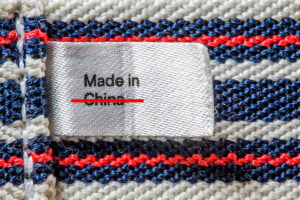If you’re an American considering picking up a new language and have narrowed it down to Chinese or Spanish – it should be a no-brainer. As China slips into utter collapse, our southern neighbors will pick up the slack and “hola” will get you much farther than “nǐ hǎo”.
As the US pulls manufacturing from China, we’ll look to Mexico City to fill that void. This region not only holds over half of Mexico’s population but also represents the largest untapped workforce globally. So, the workforce is there, but we’re still missing a couple of pieces of the puzzle.
A massive industrial buildout will have to happen for this transition to work – and quick, too. I’m talking about new rail and border infrastructure, beefing up the I-35 corridor and improving connections within the US manufacturing industry.
If the US and Mexico can execute this buildout within the next five years, finding an alternative to Chinese manufacturing will be much easier. However, if the two amigos don’t get aggressive soon, we might have to throw a couple more languages into the curriculum.
Here at Zeihan On Geopolitics we select a single charity to sponsor. We have two criteria:
First, we look across the world and use our skill sets to identify where the needs are most acute. Second, we look for an institution with preexisting networks for both materials gathering and aid distribution. That way we know every cent of our donation is not simply going directly to where help is needed most, but our donations serve as a force multiplier for a system already in existence. Then we give what we can.
Today, our chosen charity is a group called Medshare, which provides emergency medical services to communities in need, with a very heavy emphasis on locations facing acute crises. Medshare operates right in the thick of it. Until future notice, every cent we earn from every book we sell in every format through every retailer is going to Medshare’s Ukraine fund.
And then there’s you.
Our newsletters and videologues are not only free, they will always be free. We also will never share your contact information with anyone. All we ask is that if you find one of our releases in any way useful, that you make a donation to Medshare. Over one third of Ukraine’s pre-war population has either been forced from their homes, kidnapped and shipped to Russia, or is trying to survive in occupied lands. This is our way to help who we can. Please, join us.
Transcript
Hey everybody. Peter Zeihan here coming to you from Mexico City. And for those of you back in the States, this is a town you’re going to all have to get used to get to know very well, because it’s the solution to a lot of the upcoming problems. Now, for those of you guys who have been following me for a while, you know that I have been very concerned that the Chinese system is breaking, the demographic situation is terminal.
The government itself seems to be incapable of making decisions now. And Chairman Xi is basically purge the entire system of anyone with a positive IQ. Which means that all of the manufacturing industrial base that exists in China is something going to have to get by without very, very soon. The question is whether that’s one year from now, four years from now or ten years from now, but certainly no more than that, which means if we still want stuff, we’re going have to make it differently.
And that’s where Mexico comes in. Now, a lot of folks point to the nexus between Texas and northern Mexico as being a very successful model. And I agree. Over the last 35 years, the industrial plant that’s built up there has made itself all by itself the third or fourth largest on the planet next to China ink, of course, and the German system in Europe.
But that is not probably something that we can pull off. Again, I mean, yes, there are ways to improve that with infrastructure, with labor, with capital. Tech. I agree with all of that. We should do all of that. But the bottom line is that Texas has run out of people and it has now had to recruit from the rest of the United States just to expand its footprint from where it is now.
And Northern Mexico has run out of people because they’re all already working in that Texas Mexico synergy. And it’s great and it’s wonderful and it’s not done, but it can’t double or triple. And that’s exactly the scale of what we need to do. The solution is to integrate the rest of the United States with the rest of Mexico, specifically the Greater Mexico City region, which is home to over half of Mexico’s population.
And it’s the largest untapped workforce in the world at the moment. That means massively expanding the infrastructure that connects the two countries. Today, about 80% of the traffic and manufacturing between Texas and northern Mexico is by truck, which is among the least efficient ways that you can move things. But it does allow for a lot of small connections with small and medium sized enterprises on both sides of the border, contributing to very complicated supply chains, particularly in automotive.
We need to think bigger. We need a better transport system to take things at bulk so there’s not necessarily less integration between the various stuffs on both sides of the border. But the value add can really explode because we can do things at scale. And for that, we need rail. We need a rail system that connects areas beyond the Texas Triangle to the Mexico City core.
Right now, there’s only one multimodal rail system at all that comes south from the border, as far south as the very edge of the Mexico City complex. We need to expand that system by at least a factor of four in the not too distant future. In addition to expanding the border infrastructure, in addition to expanding America’s I-35 corridor, in addition to expanding the Texas Triangle’s connections to the rest of the manufacturing zones in the United States.
If we pull this off in the next five years, we’re going to be in great shape. And if we don’t, well, then we’re going to have to figure out what sort of stuff we don’t actually want. No pressure.








